The Amsterdam Treaty, formally known as the Treaty of Amsterdam, was signed on October 2, 1997, and came into force on May 1, 1999. It represented a crucial step in the ongoing process of European integration and was a significant milestone in the evolution of the European Union (EU). The Treaty addressed various issues of institutional reform, political cooperation, and the broader scope of EU policies. The Amsterdam Treaty marked a crucial moment in the history of the EU by building upon the achievements of previous treaties, especially the Maastricht Treaty (1992), while also responding to emerging challenges in the post-Cold War world.
1. Institutional and Political Reforms
One of the most significant aspects of the Amsterdam Treaty was the reform of EU institutions, particularly in anticipation of the EU’s further enlargement. It aimed to streamline EU governance, enhance the decision-making process, and improve the EU’s capacity to act effectively in an expanding Europe.
- Strengthening the Role of the European Parliament:
The Amsterdam Treaty reinforced the legislative powers of the European Parliament (EP). The co-decision procedure (now known as the ordinary legislative procedure) was extended to more policy areas, giving Parliament greater influence over legislation. This shift reflected the growing democratic legitimacy of the EU, as Parliament’s role in shaping laws and policies was elevated. With the Treaty, the European Parliament became co-equal with the Council of the EU in many areas, thus increasing its capacity to influence EU lawmaking. - Decision-making and Qualified Majority Voting:
The Treaty reformed the decision-making process within the Council of the EU, introducing qualified majority voting (QMV) as the standard procedure in many policy areas. QMV replaced the previous system of unanimity, which was often a barrier to effective decision-making, especially as the EU expanded. This reform aimed at making decision-making faster and more efficient, which was essential for an EU poised for enlargement to include Central and Eastern European countries. - The Role of the European Council:
The Amsterdam Treaty reinforced the role of the European Council (the body consisting of heads of state or government). While it continued to serve as a strategic decision-making body, the Treaty clarified its role in guiding the direction of the EU’s policies. The Treaty also provided for the appointment of a permanent president of the European Council, which was intended to provide more continuity and leadership at the EU’s highest political level. This change was later implemented in the Lisbon Treaty (2009), with the creation of the position of President of the European Council.
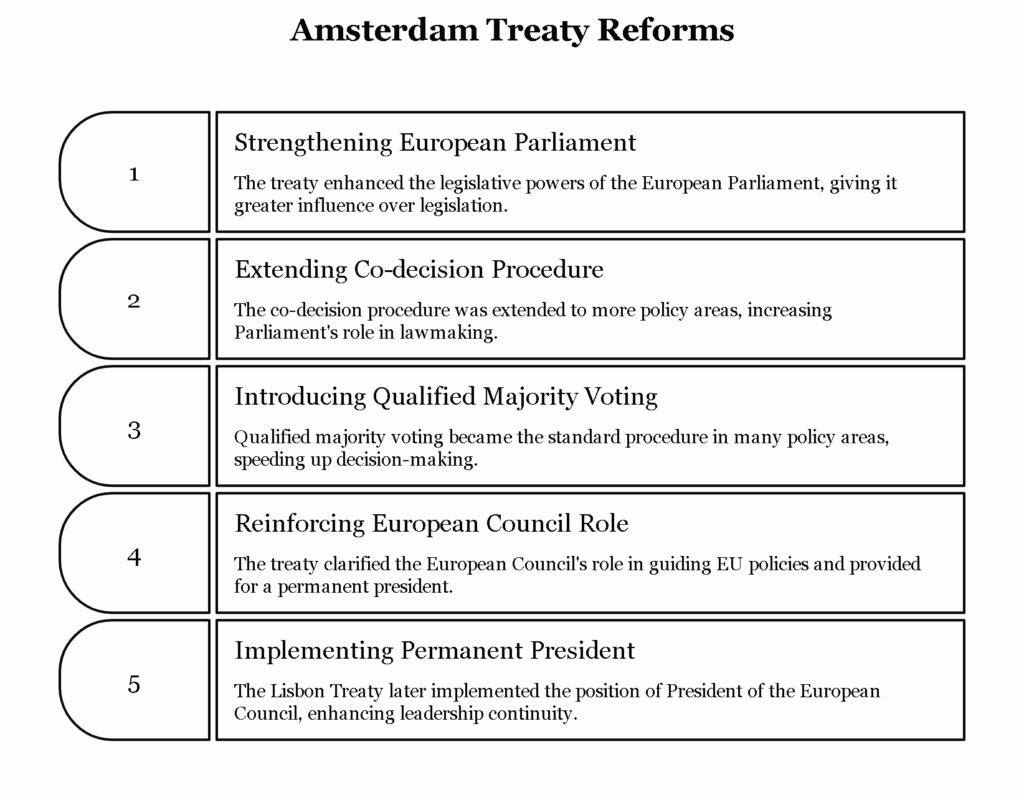
2. Expanding the Scope of EU Policies
The Amsterdam Treaty also introduced important changes to the EU’s policy areas, broadening the scope of the Union’s activities and enhancing its ability to address new challenges in an increasingly complex global environment.
- Justice and Home Affairs (JHA):
One of the key developments of the Amsterdam Treaty was the creation of a more coherent framework for Justice and Home Affairs. The Treaty incorporated measures for cooperation in criminal justice, police cooperation, and immigration. The EU’s role in combating organized crime, terrorism, and illegal immigration became more pronounced. The Treaty introduced the Schengen Agreement into EU law, facilitating the abolition of border controls between most EU states and promoting greater cooperation in matters such as asylum policy and visa requirements. - Common Foreign and Security Policy (CFSP):
The Amsterdam Treaty also enhanced the EU’s role in foreign policy. The Treaty aimed to strengthen the EU’s capacity to act as a global actor, establishing the High Representative for CFSP, a position created to coordinate and represent the Union’s foreign and security policies. While the CFSP was a feature of the Maastricht Treaty, the Amsterdam Treaty gave it more institutional coherence, fostering greater consistency and coordination in EU diplomacy. - Social Policy and Employment:
The Treaty introduced new provisions in the area of social policy. It aimed at improving social cohesion within the EU by enhancing workers’ rights and promoting social inclusion. The employment chapter of the Treaty outlined the EU’s role in fostering employment policies, job creation, and combating unemployment, which became an essential part of the EU’s broader economic and social policies. The European Employment Strategy was thus embedded within the Treaty framework, responding to growing concerns over economic disparities and social inequality.
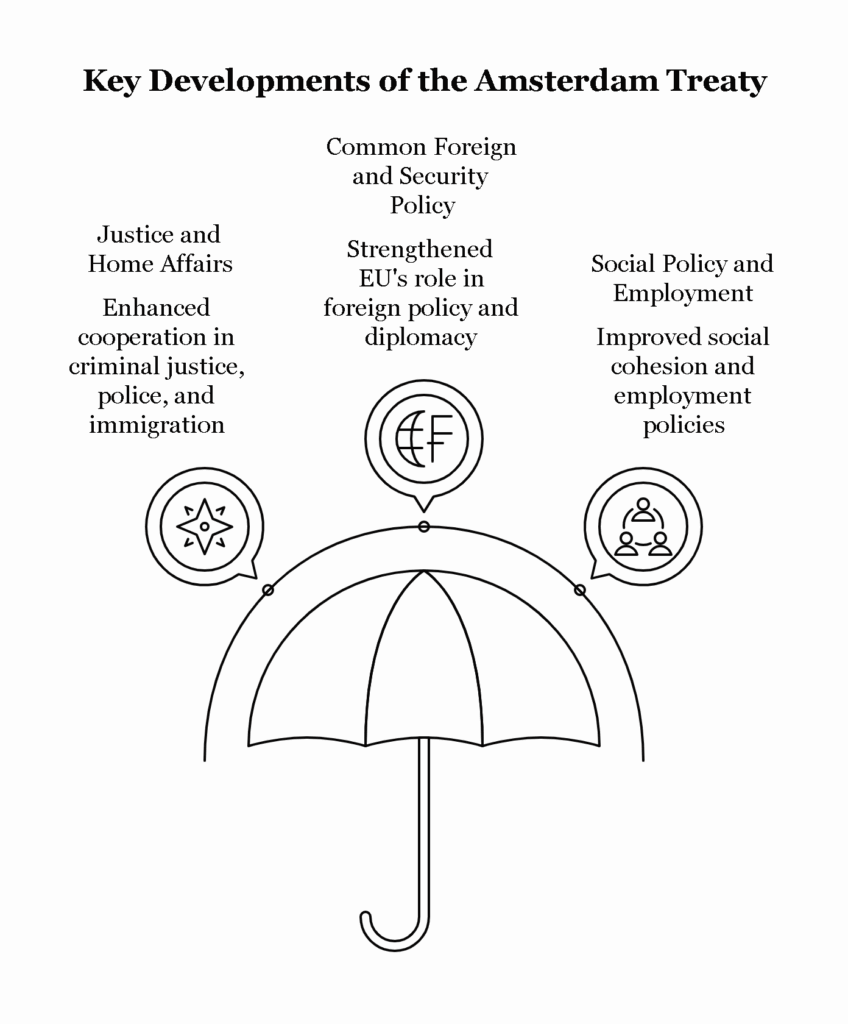
3. Enlargement and the Preparation for New Members
The enlargement of the EU was one of the central objectives of the Amsterdam Treaty. The Treaty laid the groundwork for the EU’s eastward expansion after the end of the Cold War, particularly in Central and Eastern Europe.
- Incorporating Central and Eastern European Countries:
The Amsterdam Treaty created the legal and institutional conditions necessary for future enlargement. It recognized the importance of cohesion and the need for reforms in candidate countries to meet the EU’s criteria for membership. It set the stage for the accession of former Eastern Bloc countries and Balkans states, which joined the EU in 2004 and later years. The Treaty outlined the process by which candidate states could align with EU policies, including the Copenhagen Criteria that required candidates to meet political and economic standards before joining the Union. - Regional Policy and Cohesion Funds:
Another significant aspect of the Treaty was the reinforcement of regional policy. The EU focused on addressing economic disparities between member states and regions, particularly in preparation for the inclusion of less developed regions from Central and Eastern Europe. The Cohesion Fund was expanded under the Amsterdam Treaty, and the European Regional Development Fund was bolstered to provide financial assistance to regions in need.
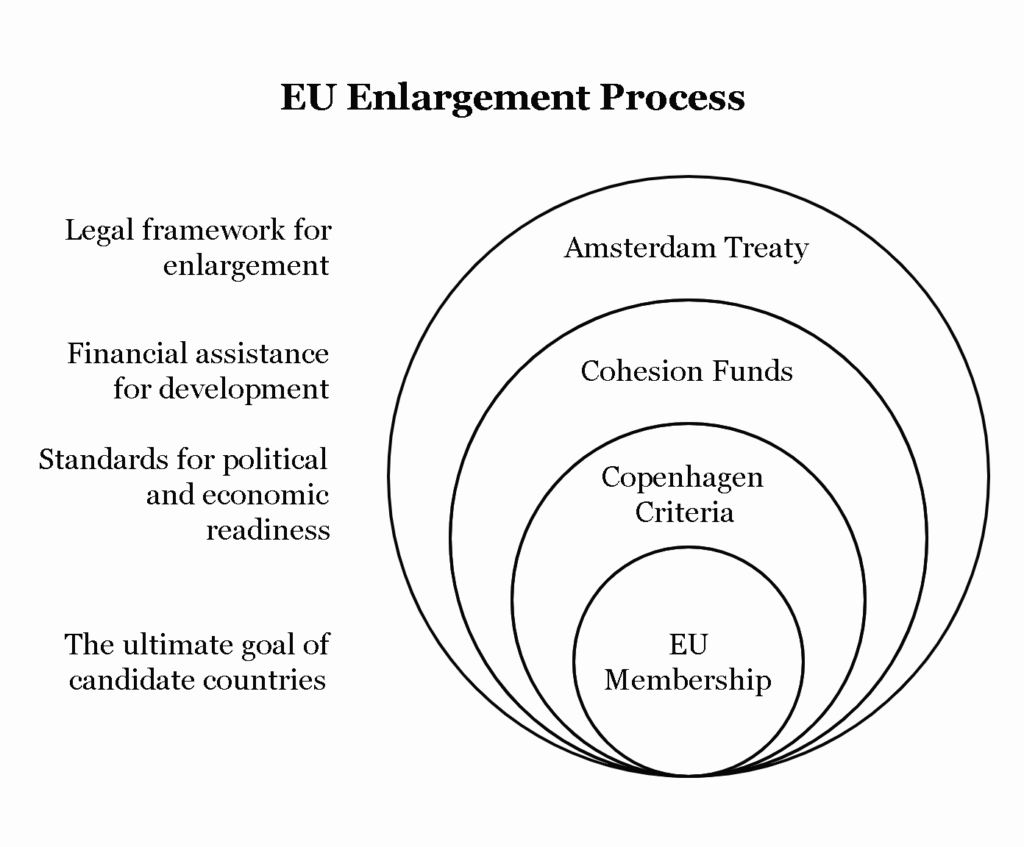
4. Strengthening Fundamental Rights and European Citizenship
The Amsterdam Treaty made important strides in reinforcing the EU’s commitment to fundamental rights and European citizenship.
- Charter of Fundamental Rights:
The Treaty introduced a reference to the Charter of Fundamental Rights of the European Union, although it was not legally binding at the time. The Charter reaffirmed the EU’s commitment to human dignity, freedom, equality, and solidarity, setting clear standards for protection against discrimination, respect for privacy, and the right to a fair trial. Although the Charter was later made legally binding by the Lisbon Treaty (2009), the Amsterdam Treaty was the first to recognize these rights formally. - European Citizenship:
The Treaty clarified and expanded the rights of European citizens, offering them greater mobility, the right to reside and work across EU member states, and greater access to consular protection outside the EU. The concept of European citizenship became a fundamental aspect of the EU’s identity and legal framework.
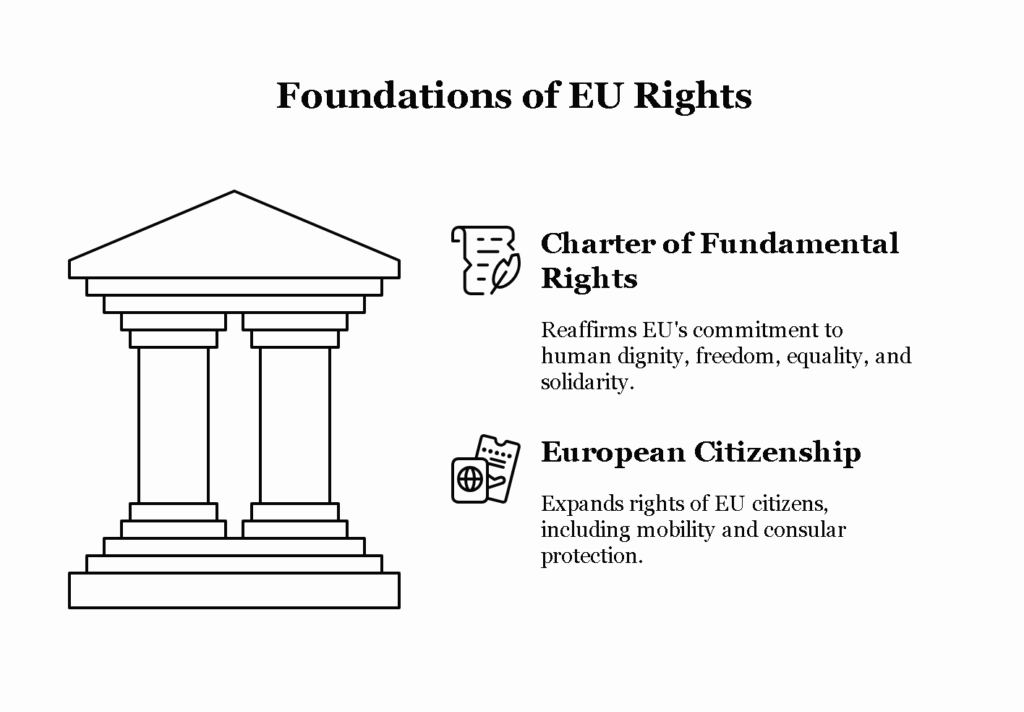
Conclusion:
The Amsterdam Treaty played a pivotal role in the evolution of the European Union by reinforcing its institutional framework, enhancing its political and economic coherence, and preparing it for future expansion. It addressed critical issues such as institutional reform, decision-making efficiency, social cohesion, and human rights protection, which were vital for the EU’s development in the post-Cold War world. By laying the groundwork for the enlargement process and enhancing the EU’s global standing, the Amsterdam Treaty contributed to making the Union more inclusive, dynamic, and capable of responding to emerging global challenges.




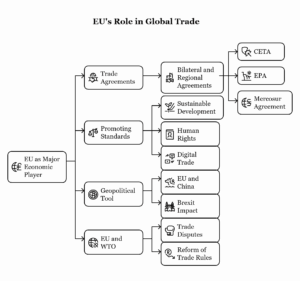

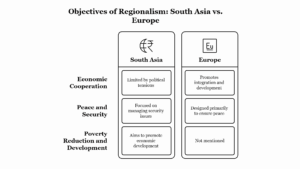

Leave a Reply